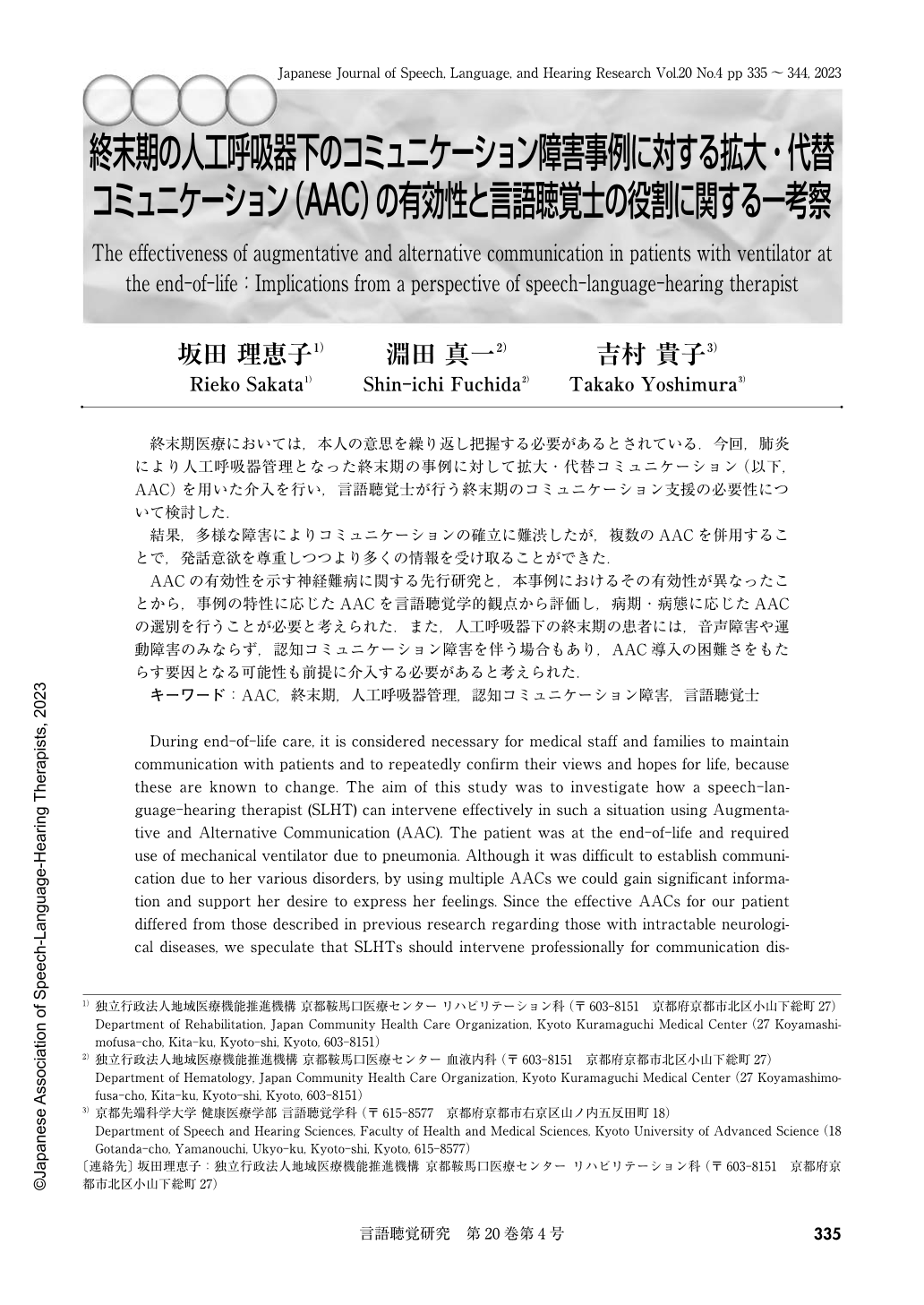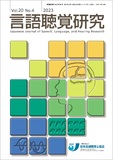Japanese
English
- 有料閲覧
- Abstract 文献概要
- 1ページ目 Look Inside
- 参考文献 Reference
終末期医療においては,本人の意思を繰り返し把握する必要があるとされている.今回,肺炎により人工呼吸器管理となった終末期の事例に対して拡大・代替コミュニケーション(以下,AAC)を用いた介入を行い,言語聴覚士が行う終末期のコミュニケーション支援の必要性について検討した.
結果,多様な障害によりコミュニケーションの確立に難渋したが,複数のAACを併用することで,発話意欲を尊重しつつより多くの情報を受け取ることができた.
AACの有効性を示す神経難病に関する先行研究と,本事例におけるその有効性が異なったことから,事例の特性に応じたAACを言語聴覚学的観点から評価し,病期・病態に応じたAACの選別を行うことが必要と考えられた.また,人工呼吸器下の終末期の患者には,音声障害や運動障害のみならず,認知コミュニケーション障害を伴う場合もあり,AAC導入の困難さをもたらす要因となる可能性も前提に介入する必要があると考えられた.
During end-of-life care, it is considered necessary for medical staff and families to maintain communication with patients and to repeatedly confirm their views and hopes for life, because these are known to change. The aim of this study was to investigate how a speech-language-hearing therapist (SLHT) can intervene effectively in such a situation using Augmentative and Alternative Communication (AAC). The patient was at the end-of-life and required use of mechanical ventilator due to pneumonia. Although it was difficult to establish communication due to her various disorders, by using multiple AACs we could gain significant information and support her desire to express her feelings. Since the effective AACs for our patient differed from those described in previous research regarding those with intractable neurological diseases, we speculate that SLHTs should intervene professionally for communication disorders at the end-of-life in order to select effective AACs that are appropriate to the stage and condition of the patient's disease. In addition, it was considered necessary to intervene based on the premise that patients in the terminal stages of life on a ventilator may have not only speech and motor impairments but also cognitive communication difficulties, which may cause difficulties in the introduction of AAC.

Copyright © 2023, Japanese Association of Speech-Language-Hearing Therapists. All rights reserved.


